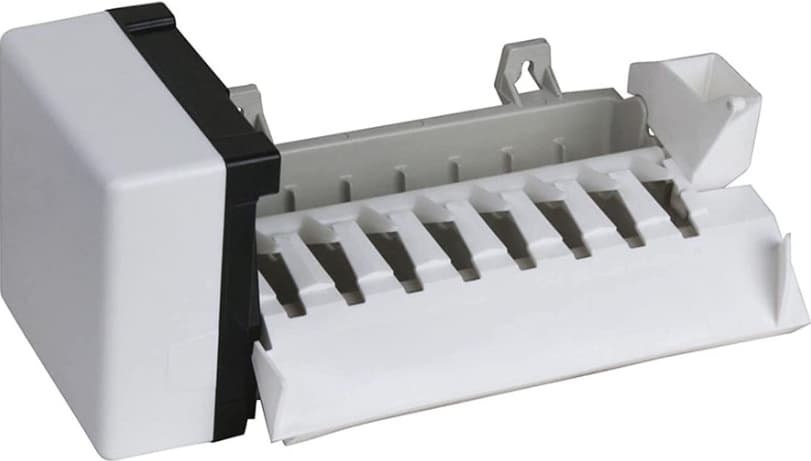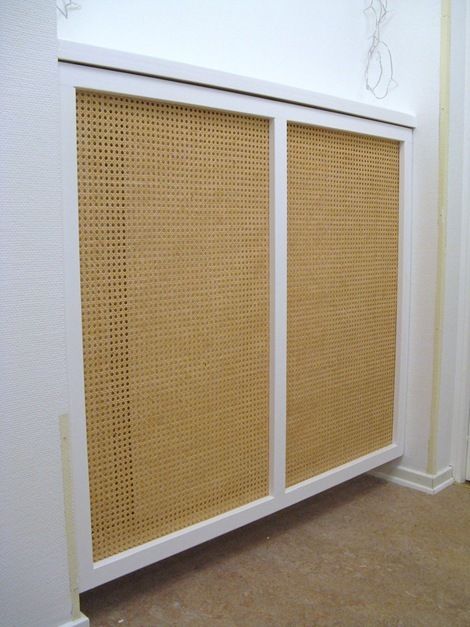Kitchenaid KSCS25INSS00 Ice Maker Not Working – It’s a hot summer day and all you want is a nice cold glass of water with some refreshing ice cubes. You go to the freezer and grab some ice, only to find your KitchenAid ice maker has stopped producing ice! Now you’re left with a lukewarm beverage and no ice on one of the hottest days of the year.
If you have a KitchenAid refrigerator with an ice maker that suddenly stops working, don’t panic. This is a common problem that can often be fixed with simple troubleshooting steps.
In this article, we’ll discuss some of the top reasons a KitchenAid ice maker stops working and provide tips to get it functioning properly again.
Kitchenaid KSCS25INSS00 Ice Maker Not Working

We’ll start by explaining how ice makers work so you can better understand the internal process. Then we’ll go through some easy troubleshooting steps like checking the power supply, water supply, freeze cycle, and resetting the ice maker.
We’ll also offer tips on replacing any defective parts and preventing issues in the future with proper maintenance.
By the end of this guide, you’ll be able to diagnose and repair a KitchenAid ice maker that’s not making ice.
Let’s begin dissecting the common causes and solutions so you can get back to enjoying frosty cold drinks and ice for all your chilling needs!
How an Ice Maker Works?
Understanding how an ice maker functions can provide insight into why it might stop working properly. Here’s an overview of the internal components and cycle of a typical ice maker:
Main Parts
- Water inlet valve – Opens to allow water into the ice maker mold. Uses a solenoid to open and close.
- Water line – Supplies water from the household supply to the inlet valve. Usually made of copper or plastic.
- Freeze mold – Metal mold containing small compartments for forming ice cubes. Made of aluminum or stainless steel.
- Heating element – Warms the mold slightly so cubes will be released after freezing.
- Ejector blades – Metal arms that scoop out the frozen ice cubes and direct them into the storage bin.
- Ice cube bin – Storage bin below the freeze mold to collect finished ice cubes.
- Control module – Regulates the cycle by opening/closing the inlet valve and turning on the ejector blades.
The Ice Making Cycle
The cycle includes these key stages:
- Fill – The control module sends power to open the inlet valve. Water enters the freeze mold and starts filling the cube compartments.
- Freeze – When the water reaches a certain level, a float rises which shuts off the inlet valve. The water freezes fully into ice cubes.
- Harvest – The heating element briefly warms the mold to loosen the cubes. The ejector blades spin and scoop out the cubes which fall into the storage bin below.
- Refill – The cycle then restarts with the control module opening the inlet valve to refill the mold with water.
The sequence then continuously repeats to keep producing fresh ice as needed.
By understanding this cycle, you can better pinpoint at what stage the ice maker is failing. This will aid troubleshooting efforts. Now let’s look at the common issues that can disrupt the cycle and cause ice production to halt.
Troubleshooting Steps for a KitchenAid Ice Maker Not Making Ice
If your KitchenAid ice maker suddenly stops producing ice, there are several things you can check to identify and fix the problem. Here are some step-by-step troubleshooting tips:
Check the Power Supply
The first thing to check is whether the ice maker is getting power:
- Make sure the refrigerator and ice maker are both plugged in and get an electrical supply.
- Check for any tripped breakers or blown fuses that may have disrupted power.
- Verify the ice maker power switch is turned to the ON position. This is usually located behind the freezer door.
- Inspect the electrical connections looking for any loose wiring. Tighten or reconnect as needed.
- Test the outlet with a multimeter to confirm power is running to the refrigerator.
If there are no issues found with the power supply, move on to inspecting the water supply.
Inspect the Water Supply
Lack of water will prevent the ice maker from operating:
- Make sure the water supply valve located behind the refrigerator is turned on fully.
- Check if the water supply line is kinked or bent, obstructing water flow. Straighten as needed.
- Verify the water filter is not clogged. Bypass or replace the filter if restricted.
- Examine the water inlet valve for mineral deposits or debris. Clean valve screen filter.
- Test the inlet valve by manually activating it. If no buzzing sound, the valve solenoid may be defective.
- Inspect the fill tube for cracks or obstructions preventing water from reaching the ice mold.
- Check for leaks in any of the water supply parts. Fix leaks and replace damaged parts.
If the water components all check out, the issue may lie with the freeze cycle.
Checking the Freeze Cycle on a KitchenAid Ice Maker
If your KitchenAid refrigerator is getting water but not making ice, the problem may lie with the freezing process itself. Follow these tips to check the freeze cycle:
Inspect the Ice Mold
Examine the ice mold for any ice buildup or blockages:
- Look for ice or frost clogging the cube compartments, preventing water from entering.
- Check for stuck ice cubes not ejecting properly.
- Make sure the ice mold is fully inserted into the freezer wall.
- Confirm the mold is level and the water fill tube is properly aligned.
- Remove any ice or debris from the mold using a plastic utensil. Do not use anything metal.
Check the Heating Element
The heating element briefly warms the ice mold to release cubes:
- Test the heating element for continuity using a multimeter. No continuity means it needs replacing.
- Visually inspect for any cracks or damage.
- Make sure the connections to the element are secure.
- Check that the temperature sensor attached to the heating element is working correctly.
Verify Freezer Temperature
- Use a thermometer to confirm freezer temp is between 0°F and 10°F. Any warmer and ice won’t freeze properly.
- Inspect door seals for any gaps or cracks letting warm air leak in.
- Make sure nothing is blocking freezer vents and cold air circulation.
- Test the defrost sensor. If not working properly, freezer temps may rise.
- Try adjusting the temperature controls lower if the freezer is not cold enough.
Examine Ejector Mechanism
- Make sure ejector blades can move freely to harvest ice cubes.
- Look for ice buildup or other obstructions jamming the blades.
- Test the ejector gear motor for proper operation. Replace if defective.
- Inspect the spring and bearings on the ejector mechanism.
If the freeze cycle components check out, a reset may help get the ice maker working again.
Resetting a KitchenAid Ice Maker
If your KitchenAid ice maker has suddenly stopped working, one simple fix is to reset the ice maker. Here’s how:
Locate the Reset Button
- Refer to your model’s use and care guide to find the reset button location.
- On most models, the reset button is located on the ice maker assembly behind the freezer door.
- It may be a small circular button or a switch that slides or flips.
Reset the Ice Maker
- Make sure the freezer temperature is below 15°F. Colder temperatures improve reset effectiveness.
- Press and hold the reset button for 5-10 seconds until the red indicator light flashes.
- On flip switch models, flip the switch off for 10 seconds, then flip back on.
- The light flashing indicates the ice maker entered reset mode.
- Release the reset button. Normal operation should resume.
Allow Time for Ice Making Cycle
- After resetting, allow 24 hours for the ice maker to complete a full cycle.
- Do not keep resetting it if ice is not made—give it time.
- If no ice after 24 hours, further troubleshooting is needed.
- If successful, the ice maker will go back to producing ice normally.
Resetting can often get an ice maker working again after it abruptly stops. But if that fails, the replacement of parts may be the solution.
Replacing Defective Ice Maker Parts on a KitchenAid Refrigerator
If resetting your KitchenAid ice maker does not restore operation, the issue may be a malfunctioning component that needs replacing. Here’s how to diagnose and replace defective parts:
Isolate the Problematic Part
- Use the troubleshooting steps above to pinpoint which part is faulty.
- The water inlet valve or control module are common culprit.
- Test components like the heating element and ejector motor for proper operation.
- Assess the age of parts – older parts may fail more often.
Order the Replacement Part
- Look up the part number from the label inside the freezer or use and care guide.
- Purchase parts from a KitchenAid dealer or appliance parts supplier.
- For the control module, have a model number to ensure compatibility.
- Buy quality OEM or equivalent parts for reliable performance.
Install the New Part
- Unplug the refrigerator before replacing any components.
- Follow the instructions included with the part for proper installation.
- Carefully disconnect and remove the old part.
- Install new part, making sure all connections are tight.
- Return refrigerator to power and test for proper operation.
- Reset the ice maker after confirming new part works correctly.
With the problem component replaced, your KitchenAid ice maker should be happily making ice again!
Preventing Future Ice Maker Problems
Once you get your KitchenAid ice maker functioning again, proper maintenance and care can prevent a recurrence of issues. Here are some tips:
- Replace the water filter regularly – Clogged filters can disrupt water flow. Stick to the manufacturer’s schedule for changing the filter.
- Clean the ice maker components – Scale buildup or dirt in the water fill tube or ice mold can impede operation. Wipe down components every 6 months.
- Check supply lines periodically – Inspect water lines for cracks or potential leaks that could cause ice maker problems. Replace worn lines.
- Keep door seals clean – Buildup of dirt or grime on refrigerator door seals can allow warm air to leak in and freeze cycle issues. Clean seals seasonally.
- Remove ice buildup – If noticed, promptly clear any ice clogging the ejector blades or ice mold to prevent jamming issues.
- Maintain proper freezer temp – Ensure the temperature is always between 0°F to 10°F for optimal ice production.
- Listen for unusual sounds – Be alert for buzzing or clicking sounds that could indicate a problem is arising.
Following these maintenance tips will help prevent a recurrence of your KitchenAid ice maker troubles. But if issues pop up again, now you have the knowledge to troubleshoot and fix it!
When to Call a Repair Professional for a KitchenAid Ice Maker?
While most common ice maker problems can be resolved with basic troubleshooting and repairs, sometimes it is best to call in a professional appliance repair technician. Here are signs it’s time to get help:
- You followed the troubleshooting steps but the ice maker still does not work.
- Issues began after the installation of a new water filter.
- The ice maker leaks water.
- Loud or abnormal noises coming from the ice maker.
- Freezer cooling issues along with ice maker problems.
- Error codes or flashing alert lights appear.
- Electrical, voltage, or power supply problems.
- Refrigerant leaks suspected.
- Damage or cracks in water inlet valves, hoses, or other components.
- The ice maker wire harness needs replacing.
- Difficulty accessing certain internal components safely.
- Confusion over proper part replacements.
- Concern about voiding refrigerator warranty.
When complex repairs are needed, it can save time and money in the long run to hire an appliance pro.
Benefits of Professional Repair
- Experienced technicians can accurately diagnose problems.
- Certified to safely handle refrigerants.
- Proper tools to disassemble components without damage.
- Access to technical manuals for your specific model.
- The stock of replacement parts is on hand.
- Repairs are done correctly to avoid the recurrence of problems.
- Provided warranty on work performed.
Don’t struggle with a persisting ice maker issue. Call a professional for prompt, long-lasting repairs.
Did You Learn to Fix?
Conclusion:
Having an ice maker quit working unexpectedly can certainly be an inconvenience, especially during the hot summer months when you rely on ice for cold drinks.
But in many cases, you can get your KitchenAid ice maker functioning again with some simple troubleshooting and DIY repairs.
The key is to methodically diagnose the issue starting with easier fixes like ensuring proper power and water supply.
Checking the internal freeze cycle components and ejector mechanism can pinpoint mechanical problems. Resetting the ice maker may get it back on track if it stopped for no apparent reason.
For persistent issues or complex repairs involving electrical skills or refrigerant handling, don’t hesitate to call in a professional appliance repair technician.
They have the expertise and tools to accurately troubleshoot and fix your ice maker for the long term.
Following the maintenance tips provided can help avoid a recurrence of problems down the road. Keep this guide handy and refer to it anytime your KitchenAid ice machine needs a little troubleshooting TLC to get back to doing what it does best – delivering fresh ice for frosty drinks on hot days!


